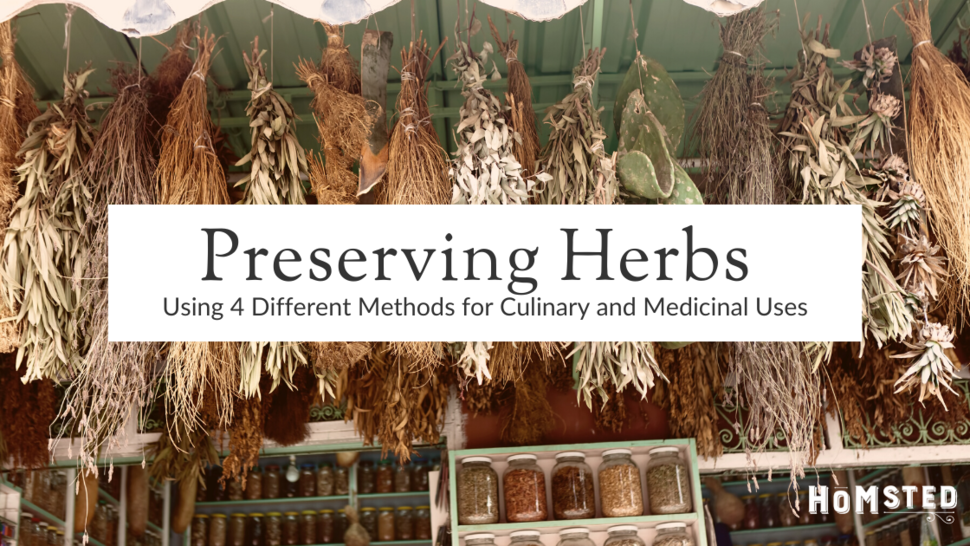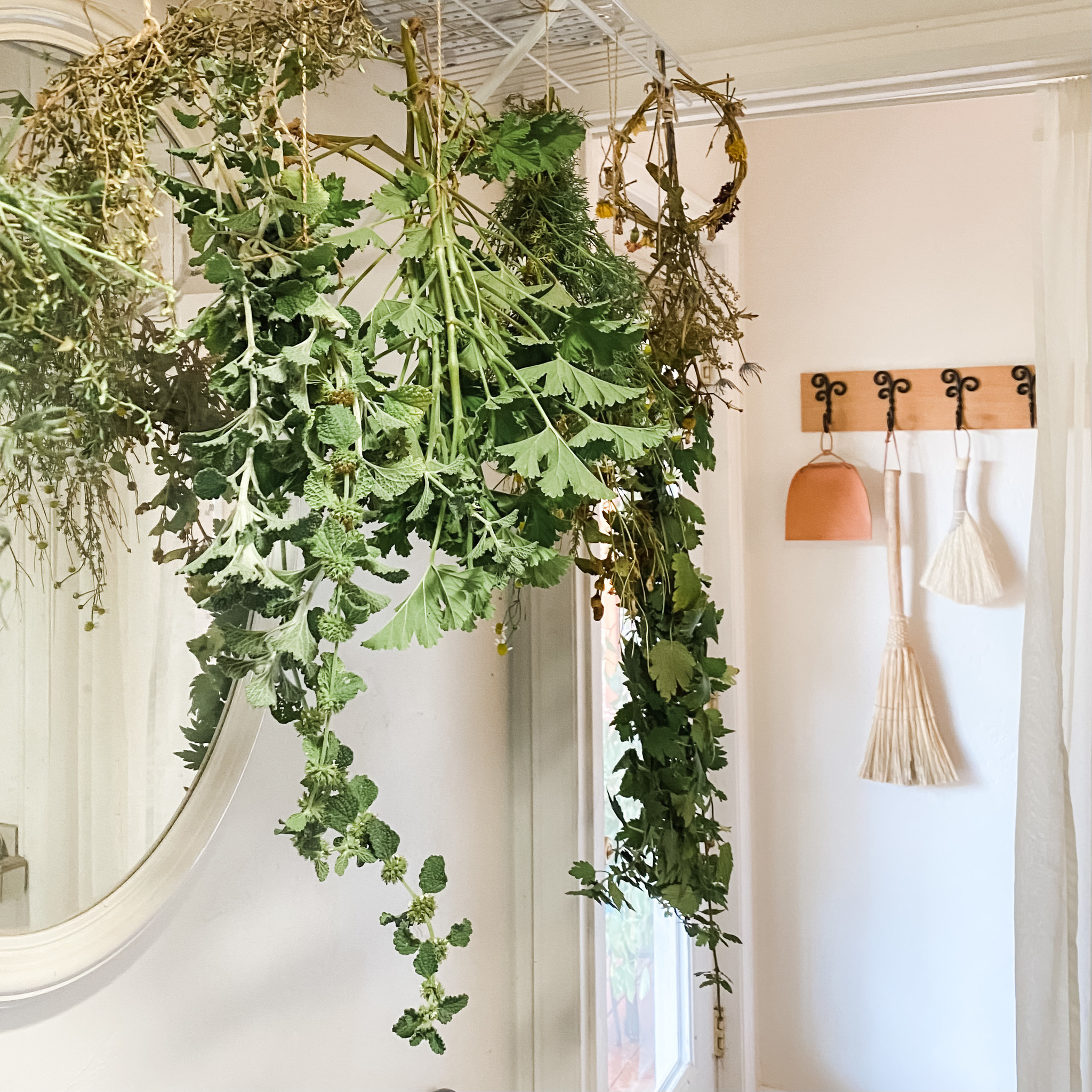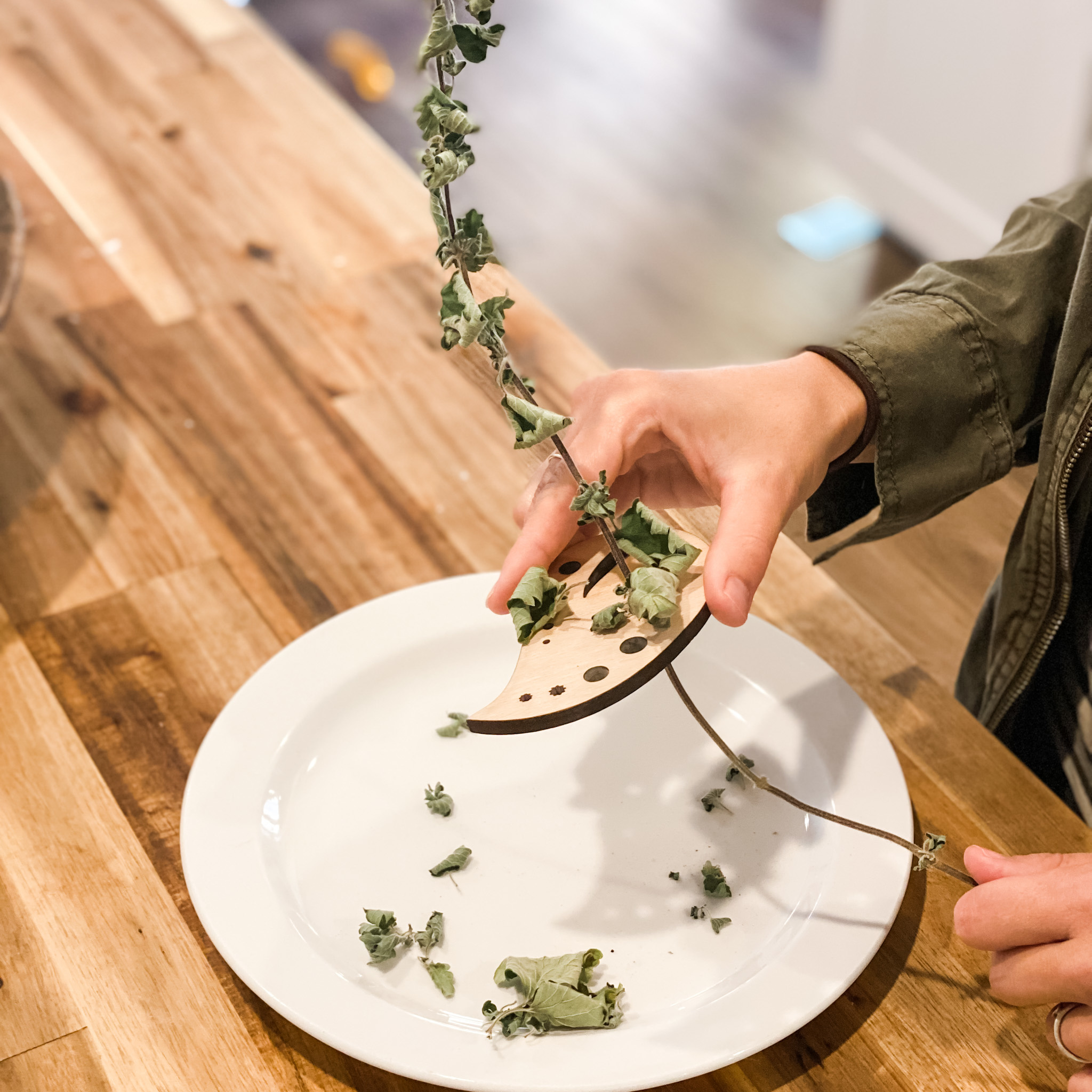Preserving Herbs

One of my favorite times of year is when my herb garden is in full bloom. I am usually picking fresh herbs for every meal or picking the plants for a cup of tea. But what do I do for the remainder of the year when these plants aren’t available right outside my back door? I preserve them!
For many years, I just watched them wither on the vine and counted down the days until they started sprouting again. Then one spring, I randomly planted tarragon. Yeah sure, I added grocery store bought dried tarragon to a recipe when it called for it, but I have never experienced it fresh. I never have gotten so many compliments on my cooking as I did that summer (all thanks to tarragon and the other fresh herbs). I was absolutely obsessed!
That fall, I was in a panic. I could not wait another year to experience the unique licorice-like flavor of this plant (estragole is the organic compound that gives fennel, anise and tarragon their distinct flavors).
So I questioned: How do I preserve my herbs while keeping most of the volatile oils (i.e. the flavor and medical properties)? Here are some tips and tricks I have learned over the years:
Harvesting for the most potency:
Most plants have the most volatile oils just before the flowers first open. This is the ideal time to pick and preserve. The new leaves at the tips of the plants will have the most concentrated flavor - the crème de la crème. You can prolong the harvest by snipping off the flower buds whenever they appear. Once the plant flowers they are not totally unusable but they will have a slightly more bitter flavor. Herbs will have the highest amount of essential oils if harvested on a sunny day in the morning after the dew has evaporated and before the sun heats them up and the volatile oils are released into the air.
How to harvest:
Use scissors to cut the stems just above a leaf or pair of leaves otherwise known as the node (this will encourage dormant buds to grow and make a fuller plant). Remove any sickly, dried or wilted leaves and brush away any insects. Leave about 4 to 6 inches of stem for later growth. It is best if you can avoid washing them, but if you must, then rinse under cold water and gently pat dry with a cloth or paper towel.
If you plan to collect the seeds from a plant (examples are fennel, dill, coriander) then you will need to wait until the seeds are mostly dry. Then snip off the flowering heads and add to a paper bag and shake to remove the seeds. Store them in an airtight container.
Air drying:
Drying flowers and herbs is most often done by the ancient method called air drying. This is a simple and easy way to dry plants and creates a beautiful and aromatic ambiance to your home. First, remove the leaves from the bottom of the stem about an inch or two off the bottom. You can then bundle four to eight stems together. Use a string or rubber band to tie the bundles. When hanging the plants to dry, put them in a cool, dark space that has gentle air circulation. The darkness helps retain color when preserving plants. Drying the plants usually takes two to three weeks. Once they are dry, then remove leaves and flowers from stems and place into an airtight container.

Dehydrating:
Prep the plants as you would before air drying. Then remove the leaves from the stems (I prefer to use an herb stripper). Then place the herb leaves in a single layer on the dehydrator tray so the leaves will dry evenly. You may need to cover the dehydrator tray with a fine screen to prevent herbs from falling down into the bottom. For the most flavor and medicinal properties I dry mine on the lowest heat possible (somewhere between 90-130F, the lower the better).
Oven drying:
If you are in a time crunch and would like to dry your herbs quicker, then you can dry them on low in the oven. I tend not to do this method since the flavor does not seem to be as strong as air drying them. Set bake to no more than 130 degrees and place your herbs on a cookie sheet. Bake for 2-4 hours. Once herbs are fully dry remove and store in an airtight container.

Freezing:
Freezing your plants is a great way to lock in flavor (especially tarragon, basil, chives, lemon balm, dill, any of the mints, oregano, parsley, rosemary, sage and thyme). All you need to do is remove the leaves from the stock and add to a bag. Be sure to remove all the air out of the bag. My favorite way is to add several culinary herbs with some olive oil to my blender and mix (we love using infused olive oils such as garlic or lemon). Then pour the mix into an ice cube tray. These are great to add to any soup or pasta. I also like to do the same with my more medicinal herbs. I blend herbs such as motherwort, lemon balm, mints, lavender, catnip with a little water and pour into the ice cube trays. You can add a cube to boiled water for a fresh cup of herbal tea. Click here for instructions on how to brew a medicinal tea.




